The London Green Directory
Air Quality | Waste | Food | Water | Energy | Transportation | Ecowise Consuming | Empowerment | Biodiversity | Circular Economy
Water
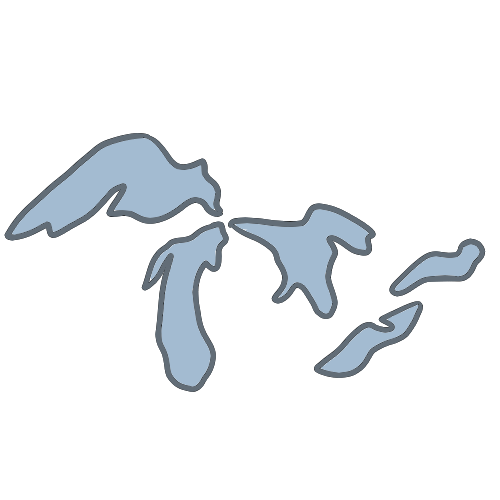
In a land with so much fresh water, it doesn’t seem as if there is a need for conservation. But reducing our water use is an effective way to:
- Reduce demand on water treatment and supply systems
- Reduce demand on wastewater (sewage) collection and treatment systems
- Reduce your household charges for water and sanitary sewer
- Conserve the largest freshwater system on Earth
Where Does Our Water Come From?
Federal government
The federal government has jurisdiction related to fisheries, navigation, federal lands, and international relations, including management of boundary waters shared with the United States, and relations with the International Joint Commission.
It also has significant responsibilities for agriculture, health and the environment, and plays a significant role supporting aquatic research and technology, and ensuring national policies and standards are in place on environmental and health-related issues.
Federal water-related legislation includes the Canada Water Act containing provisions for formal consultation and agreements with the provinces; the International River Improvements Act which provides for licensing of activities that may alter the flow of rivers flowing into the United States; and the Department of the Environment Act which assigns the national leadership for water management to the Minister of the Environment.
All provinces and territories in Canada have pollution control regulations. An example of a substance successfully regulated to reduce pollution is the phosphate found in laundry detergents. The Canadian Environmental Protection Act (CEPA) regulates many of the substances that have a deleterious effect on the environment.
Under the Constitution Act (1867), the provinces are “owners” of the water resources and have wide responsibilities in their day-to-day management. The federal government has certain specific responsibilities relating to water, such as fisheries and navigation, as well as exercising certain overall responsibilities such as the conduct of external affairs.
While providing national leadership to ensure that Canada’s freshwater management is in the national interest, Environment and Climate Change Canada also actively promotes a partnership approach among the various levels of government and private sector interests that contribute to and benefit from the wise management and sustainable use of the resource.
The Federal Water Policy, the first of its kind in Canada, is a policy that was formulated after several years of intensive consultation within and outside the government. It addresses the management of water resources, balancing water uses with the requirements of the many interrelationships within the ecosystem.
The policy takes into account the needs of all Canadians in its overall objective:
- to encourage the use of freshwater in an efficient and equitable manner consistent with the social, economic and environmental needs of present and future generations
To manage Canada’s water resources, the federal government has defined two main goals:
- to protect and enhance the quality of the water resource; and,
- to promote the wise and efficient management and use of water.
Provincial

In 1993, the Province created the Ontario Clean Water Agency (a Crown corporation), which focuses on the operation of water and sewage systems of more than 450 water and wastewater treatment facilities in the province. Through the Ministry of the Environment, Conservation and Parks, the province regulates these systems to ensure water safety and quality including the registering of all municipal drinking water systems, system owners/operators licensing, operator authorization to run and maintain drinking water systems and issues of drinking water works permits to modify, repair or extend drinking water systems. The province also releases yearly reports on drinking water.
The provincial government has multiple pieces of legislation to regulate water quantity and quality in Ontario such as The Clean Water Act and The Ontario Water Resources Act. The Clean Water Act received Royal Assent in 2006 to ensure the protection of Ontario’s municipal drinking water sources. The related Drinking Water Source Protection program is administered by the Ministry of Environment, Conservation and Parks (MECP). The Ontario Water Resources Act focuses on both groundwater and surface water throughout the province. The Water Resources Act regulates sewage disposal and “sewage works” and prohibits the discharge of polluting materials that may impair water quality. The Water Resources Act regulates well construction, operation and abandonment in addition to the approval, construction and operation of “water works”.
Municipal
London has had several sources of drinking water over the past 150 years. In the days of the early settlers, the Thames River was used for drinking water as well as for transportation. Since that time, both surface water (lakes and rivers) and groundwater (wells) sources have been used. Springbank Park, Pond Mills and the Beck Wells Systems were used as water sources. In 1967, the size and the needs of the City contributed to the requirement of a pipeline from Lake Huron. In 1995, the surface water supply system was expanded to Lake Erie. Along with water supply from these two Great Lakes, London has two back-up well systems in the north east and west parts of the City. Groundwater wells are only used as an emergency water source for London.

Our water comes to us through a network of treatment plants, reservoirs, pumping stations and pipes –1,550 km of pipes – initially built in the 1870’s. Since then it has been maintained and improved and serves us now well into the future. The City’s water system also has 8,500 fire hydrants and 110,000 water meters. The City has been fully metered since 1925.
Water at Lake Huron enters our water supply system just north of Grand Bend. It is clarified and purified at the Grand Bend Filtration Plant and then pumped through a 1.2 meter diameter pipeline to the 109 million litre reservoirs at Arva (just north of London). This water supply system – from Grand Bend to Arva – is called the Lake Huron Water Supply system. From Arva, the water is then pumped into the City of London water distribution system.

Lake Erie water is drawn from the lake and purified at the Elgin plant located east of Port Stanley. The Elgin Water Supply System supplies the cities of St. Thomas and London and several smaller communities. Before water reaches London, it is stored in a reservoir northeast of St. Thomas. London’s water treatment falls under the jurisdiction of two Boards: the Lake Huron Primary Water Supply System Joint Board of Management and the Elgin Area Primary Water Supply System Joint Board of Management. Together, these two water supply systems provide approximately 150 million litres of treated water every day (85% from Lake Huron and the remainder from Lake Erie). Visit: https://huronelginwater.ca/?s=education
Both our water treatment and water distribution systems are maintained to safeguard our water and prevent contamination. The Joint Boards manage the water system from the Great Lakes source to the city boundary while the City manages the distribution system which ensures the water quality and quantity for our residents. On an annual basis, the City of London performs over 12,000 water quality tests to ensure quality, safety and taste. London also has 10 locations in which continuous online sampling of chlorine residual is monitored. All samples are submitted to an accredited laboratory for analysis in accordance with the province’s Safe Drinking Water Act, 2002. Other provincial standards for water quality are set out in the Ontario Regulation 169/03 (water quality standards) and Ontario Regulation 170/03 (drinking water systems).

Our drinking water goes through a treatment process involving settling tanks and filtration to remove particles. Chemicals used in the treatment process provide a safe drinking water. Alum is used to help settle out finer sediments, chlorine to kill microorganisms, and fluoride to help prevent cavities. Visit: https://london.ca/living-london/water-environment/water-system
Where Does Our Water Go?
Every human needs about 2.4 litres of water each day to survive. In 2010, the UN General Assembly recognized the human right to have access to clean drinking water. The Assembly stated that a sufficient amount of water for both personal and domestic use is 50-100 litres per person per day. In contrast, the average Canadian uses 329 litres of water per day. This figure increases by approximately 50% when accounting for industrial water use. Canada is the second highest consumer of water per capita, only exceeded by the USA.

Water used in our sinks, dishwashers, washing machines and toilets goes to a sewage treatment plant. This wastewater is treated before being discharged into the Thames River. Water that runs off our eavestroughs, lawns, driveways and streets enters the storm sewer system and is discharged directly into the Thames River. Treating and pumping our water and sewage is responsible for about one-third of the energy use and greenhouse gas emissions from municipal operations in Ontario. More efficient water use can limit these impacts.
Every litre of water that does not need to be treated and pumped reduces energy use and emissions. Water conservation and efficiency can also help defer or avoid municipal infrastructure upgrades and reduce harm to our aquatic ecosystems and wetlands.

Stormwater originates from the natural flow of water from rain and snow. London’s waterways include thousands of catch-basins, hundreds of kilometers of sewer pipes, numerous channels, more than 60 management pools, 110 km of creeks and the Thames River. London has over 1,230 km of sanitary sewer (284 km of trunk sewers, 300 mm or greater in diameter), and 36 pumping stations with over 45 km of force main. The City of London operates six wastewater treatment plants which are located along the Thames River.
Conserving Water
Average Use & Reserve Fund

Water use across Canada averages 30% in toilet use, 35% in baths and showers, 5% in cleaning, 10% kitchen and drinking use and 20% for laundry use. In London, the average person uses over 250 litres of water each day in their home. To learn more about your water rates – visit https://london.ca/living-london/water-environment/your-water-bill

The City has a 25-cent fixed fee that is applied to each monthly bill for all single family residential water customers in London. These funds are collected over the year and applied to a customer assistance program. If the money from these funds has been used up at any point in the calendar year, then the program is suspended until January 1st of the following year when the funds are topped up again.
The charge contributes to a special reserve fund and is drawn against to:
- Help low-income Londoners deal with crisis situations on their monthly water bills using existing programs managed and delivered through partnerships with London Hydro, the Salvation Army, and the City. An annual fund of $100,000 is kept and topped up each year to help those in need;
- Help low-income Londoners make changes to the fixtures in their homes to help lower their monthly water use. On average 40% of home water use is from the toilet; and
- Help London’s water customers pay for water and wastewater charges one time, that have occurred as a result of a plumbing failure in their homes.
Did you know?
- 60 drops per minute wastes approx. 727L of water per month
- 90 drops per minute wastes approx. 1174L of water per month
- 120 drops per minute wastes approx. 1623L of water per month (Source)
Ways to protect our water quality
Practically everything we do affects the environment and our water supply. According to EcoHome, an Ottawa business creating more sustainable homes, a low-flow showerhead will “save up to 42,340 litres of hot water and 1,180 kWh of power per year.” For a one-time purchase item ranging in price from $10-$50 – it quickly pays for itself.
Hot water recirculation units to help save money on your water bill and limit wasted water. A hot water recirculation unit works by circulating water through the pipes so that room temperature water can return to be reheated, rather than go down the drain. When you want hot water, it’s there instantly.

What else can you do?
- Don’t pour substances like paint, paint thinner, and degreasers, solvents, or pesticides down the drain. Instead, take them to the City’s household hazardous waste drop off site
- Keep fats, oils and grease out of drains and toilets. Put kitchen grease in the garbage.
- Don’t flush old/expired medicine down the toilet, return to your pharmacy or throw away.
- Don’t use coloured toilet paper (the dyes are pollutants and take longer to decompose)
- Avoid any pesticide use at your home
- Buy organic (pesticide-free) fruits and vegetables

- Maintain septic systems regularly (have sludge pumped every 2 years to prevent harmful pathogens and bacteria from entering the environment) and don’t use septic system cleaners
- Eliminate the use of salt on driveways and sidewalks (it increases the levels of sodium and chloride in soil and water which harms plants and wildlife). Instead, use sand or corn ice-removal or other natural substitutes that are safer for your children, pets, and soil
- Use phosphate free soaps (especially in dishwashers, washing machines) to reduce sewage treatment processing and harm to the environment
- Don’t use antibacterial soaps or cleaning products (may contain triclosan, a pesticide that harms aquatic life)
- Avoid hazardous cleaning products and never pour them down the drain, choose non-toxic household products as much as possible
- Make your own natural cleaning solution with vinegar and water
Saving Water Inside
- Install low-flow aerators on the sink faucet and showerhead to reduce water flow
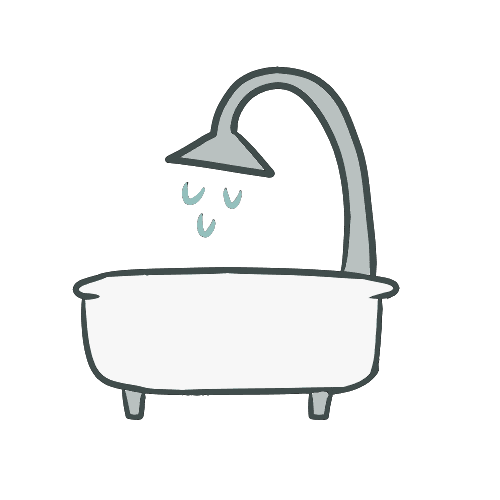
- Shorten showers and consider turning the water off while using soap, shampoo etc.
- Opt for taking showers instead of baths. Note that an 8 minute shower uses 76 litres, whereas taking a bath uses 150 litres.
- Install a low flow showerhead which uses 60% less water and 15% less hot water than a standard one. Make sure the high efficiency showerhead has a WaterSense label.
- One toilet flush can use up to 18 litres of water. Ultra-low flush toilets can use up to 12 litres LESS water per flush while maintaining the same flushing power.
- Avoid flushing unnecessarily (do not use the toilet as a wastebasket)
- Never flush wipes down the toilet. Even if a product states it is “flushable”, these items do not readily decompose in the sewers and lead to major problems in wastewater pumping stations and treatment plants.
- Check for any leaks in your toilet by adding food colouring to your water tank and waiting 15-30 minutes to see if the colour spreads to the bowl without flushing. If there is any colour in the bowl, then you have a leak, and your toilet needs to be repaired.
- Check your toilets for worn out, corroded or bent parts. Replacement parts are inexpensive, readily available, and easy to install.
- Replace or adjust the toilet flush handle if it is sticking regularly as this causes water to flow constantly.
- Add water to a second sink rather than running water when rinsing dishes
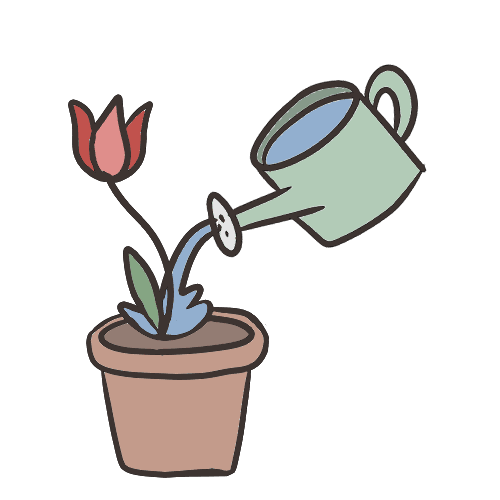
- Fill the sink for shaving and don’t run water continually when brushing your teeth
- Collect water used for washing vegetables to water plants
- Avoid using garbage disposals, for instance, garburators that waste energy and water
- Wash dishes and clothes only when you have a full load
- Keep a container of drinking water in the fridge instead of running water until its cold
- Boil vegetables using just enough water to cover them. Steaming vegetables not only uses less water, it conserves more nutrients.
- Soak your pots and pans instead of letting the water run while you scrape them clean.
- Do not use running water to thaw meat or other frozen foods. Instead, defrost foods overnight in your refrigerator or use the microwave’s defrost settings.
- A traditional washing machine uses approximately 190 L of water to wash a large load. In contrast, a high efficiency washing machine can save you up to 100 L per large load of laundry.
- Start with the right washer. When buying a new washing machine, consider purchasing a front-loading model. These machines use less water, reduce energy costs, require less soap and are gentler on your clothes.
- Wash in cold water. You’ll save money and conserve hot water for other uses. Washing in cold water also reduces damage to clothes.
- Check for and repair any leaks around the washing machine taps and hoses.
Did You Know?
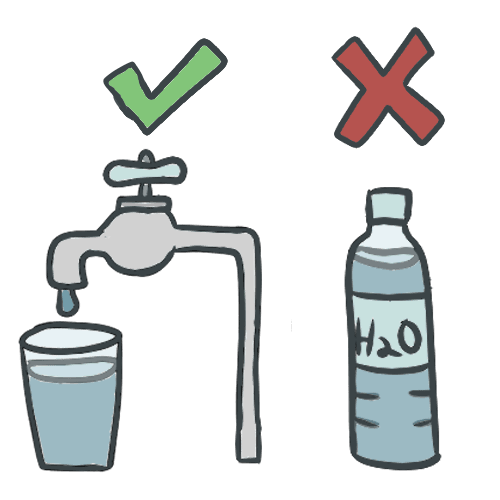
An average London household gets their daily water needs for less than a dollar a day, less than the price of a bottle of drinking water. Water bottles are almost 2,000 times more energy intensive to produce than tap water. WaterDocs tells us In Ontario alone, a billion plastic water bottles are sent to landfill every year, that tap water is strictly regulated by Health Canada, whereas bottled water is not and it takes three times the water to make a bottle than to fill it.

Saving Water Outside
- Use mulch in the garden to reduce water needs
- Sweep sidewalks and driveways rather than washing them down with a hose
- Wash your car with a bucket instead of a garden hose
- Select plants (trees and shrubs) that are drought-resistant, consider xeriscaping
- Group plants that need the same amount of water together to be more efficient when watering
- Make sure soil has plenty of organic matter to hold water
- Water plants and lawns early or late in the day to reduce evaporation

- Water plants deeply but not as frequently in order to get healthier and stronger plants
- Don’t overwater, shorter root systems make a plant more susceptible to dry conditions
- Make sure outside taps are turned off inside in preparing for winter freezing weather
- Consider purchasing a rain barrel to save water for your garden sources
- Pick up after your pet – rain washes pet waste and bacteria into our storm drains
- Remember in London, between June and the end of August, water use outdoors is restricted to even calendar days for even numbered homes, odd calendar days for odd numbered homes
- Harvest rain. Rain barrels are an excellent way to conserve water and save money on your water bills. They are easy to install and provide water for your lawn and garden.
- Purchase a rain gauge to determine how much rain or irrigation your yard has already received each week.
- Adjust your lawn watering schedule and method so that it is specific to your lawn’s soil condition.
- Avoid using a lawn sprinkler. If you must use a sprinkler, install a water efficient component such as a low-rise sprinkler head, soaker hoses, or a drip irrigation system and use a timer.
- Regularly check that your sprinkler and timer system is operating properly.
- Outfit your hose with a shut-off nozzle which can adjust the water flow rate.
- Eliminate hose and tap leaks by using hose washers between the spigot and the water hose.
- Set your lawn mower blades higher. Longer grass means less evaporation and deeper roots.
In the past the City has offered a summer Growing Naturally Free’ Home Water Audit – check in with the City if they are being offered this year – https://m.facebook.com/LondonCanada/photos/a.128996325801/10156478497340802/?type=3&locale2=hi_IN
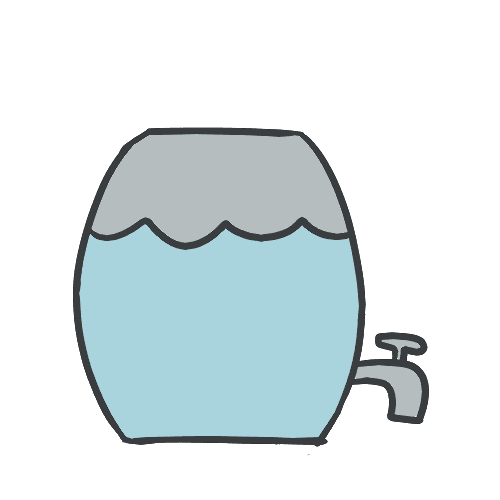
Rain Barrels— Most Home Depot, Costco and Home Hardware locations sell rain barrels. Make sure you purchase one with a fine mesh screen on the top to prevent insects and debris from getting in. Rain barrels collect and store rainwater from rooftops that would otherwise flow to storm drains and streams. Gardeners are the most frequent adopters. Rain barrels are often combined with other green infrastructure projects such as rain gardens and permeable pavement and can save most homeowners about 4,900 litres of water during peak summer months. Drain your rain barrel before each rain event to allow for full capacity storage. Ensure the barrel has an overflow system, and direct it away from your home’s foundation and your neighbour’s. As temperatures drop, drain the barrel, turn it upside down to avoid cracks from freezing water.
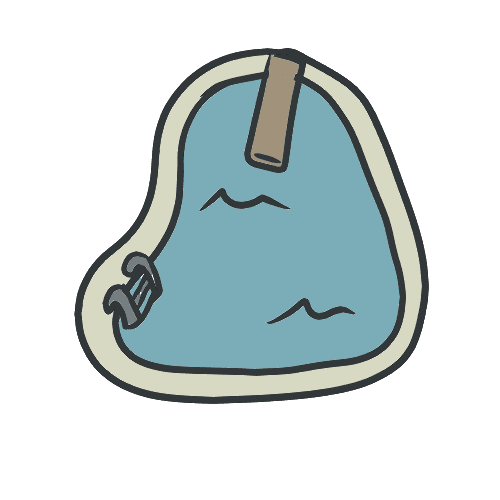
Swimming pools— Dechlorinate your pool before you empty it, empty it on a dry day, release the water onto permeable surfaces for natural infiltration and avoid your neighbour’s property when draining your pool. Tips from the Town of Ajax.
Did you know?
A moderate storm of 25 mm (1 inch) of rain produces over 2,000 litres of runoff from a roof surface of 93 square metres of water.
Business Directory
| Name | Contact |
| City of London | 519-661-4739 water@london.ca |
| Council of Canadians (London Chapter) | londoncouncilcanadians@gmail.com X/Twitter: @CanadiansOrg |
| Environment and Climate Change Canada (ECCC) | Place Vincent Massey Building 351 Saint-Joseph Boulevard Gatineau QC K1A 0H3 Toll-free: 1-800-668-6767 Email: enviroinfo@ec.gc.ca |
| Friends of Stoney Creek | 519-451-2800 infoline@thamesriver.ca |
| Lake Huron & Elgin Area Water Systems | Website |
| London Hydro | Phone: 519-661-5503 Mail: London Hydro, 111 Horton Street, P.O. Box 2700, London, ON N6A 4H6 |
| London-Middlesex Children’s Water Festival | Linda Smith London/Oxford Coordinator: 519-451-2800 x 224 smithl@thamesriver.ca |
| Middlesex-London Health Unit | https://www.healthunit.com/contact-mlhu |
| Ontario Clean Water Agency | Contact OCWA here. |
| Provincial Ministry of the Environment, Conservation and Parks | Website |
| Thames River Angler Association | Website |
| Trojan Technologies | Website |
| Upper Thames River Conservation Authority | Website |
| World Water Day | Website |
